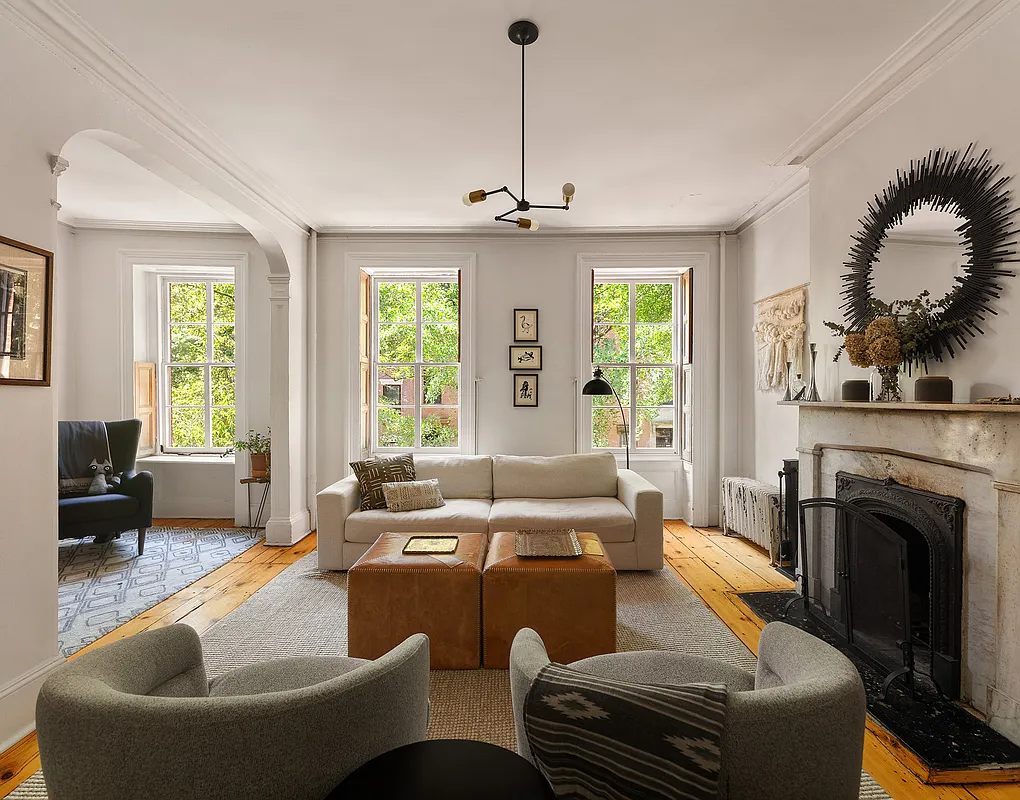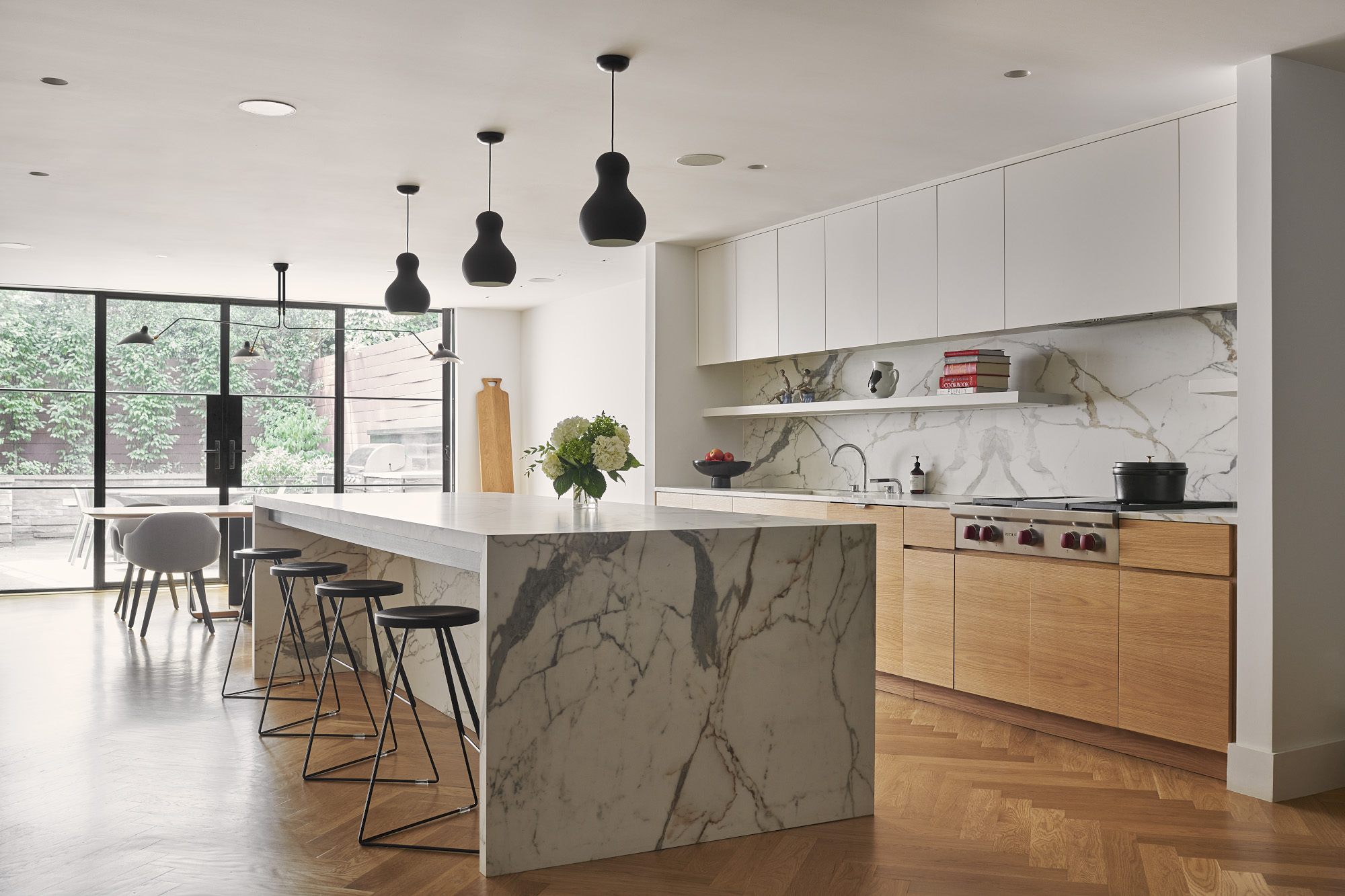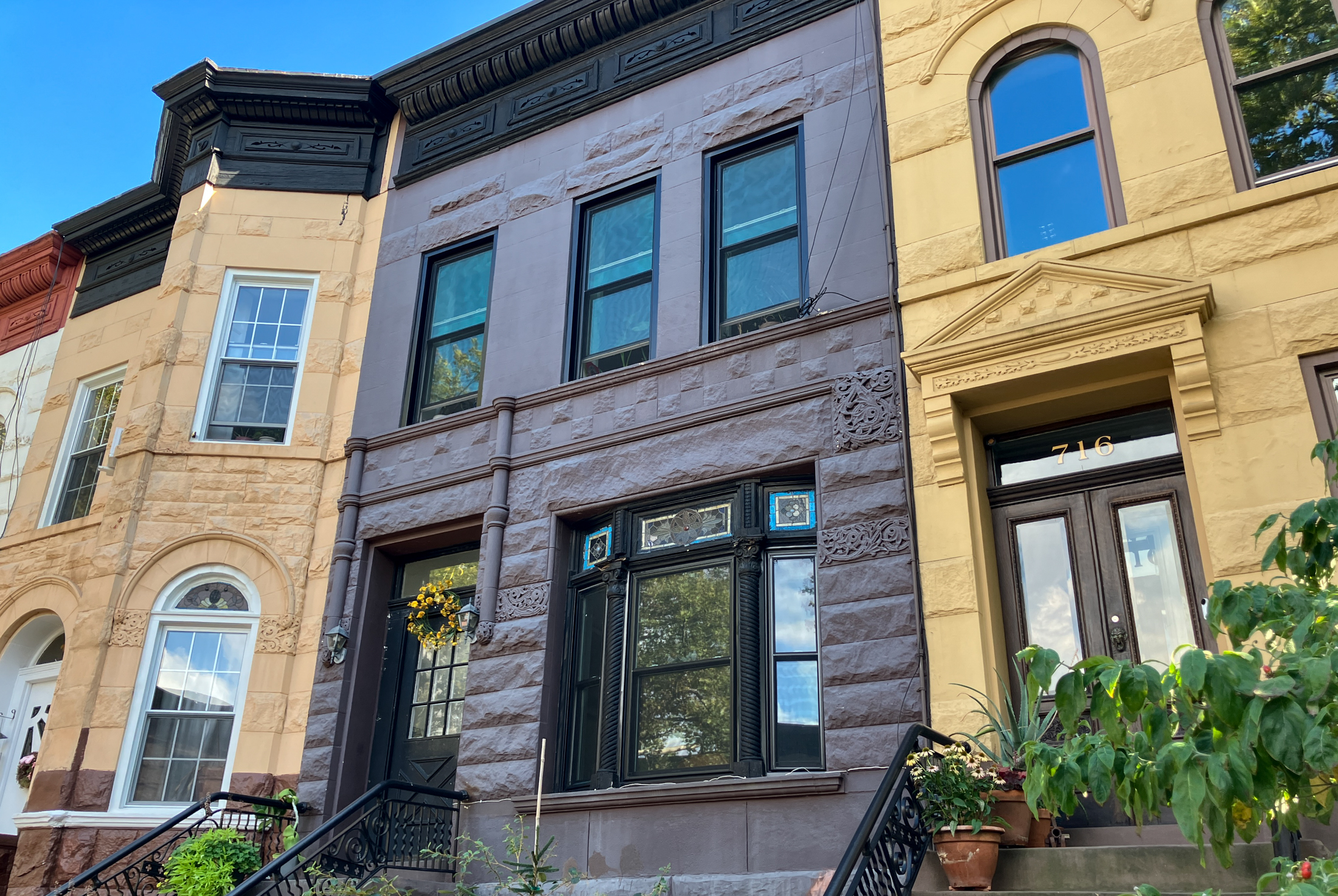Building of the Day: 109 South 6th Street
Brooklyn, one building at a time. Name: SOMA Health Club, formerly Fruitcrest Corporation, originally Bedford Avenue Theatre Address: 109 S. 6th Street, between Wythe Avenue and Berry Street Neighborhood: Williamsburg Year Built: 1891 Architectural Style: Romanesque Revival/Queen Anne Architect: William H. Gaylor. W.W. Cole is listed as the builder. Landmarked: No The story: What a…


Brooklyn, one building at a time.
Name: SOMA Health Club, formerly Fruitcrest Corporation, originally Bedford Avenue Theatre
Address: 109 S. 6th Street, between Wythe Avenue and Berry Street
Neighborhood: Williamsburg
Year Built: 1891
Architectural Style: Romanesque Revival/Queen Anne
Architect: William H. Gaylor. W.W. Cole is listed as the builder.
Landmarked: No
The story: What a life this building has had. Designed by an architect who remains unknown, it was built by W.W. Cole as the Bedford Avenue Theater. The theater opened in October of 1891 with a musical play called Jolly Surprise, by Arthur Wallack, starring the popular actress Fanny Rice, not Fanny Brice, as is often stated. The review in the Eagle noted that Miss Rice was very popular with her fans, with her pert and piquant ways. He also noted that the play, written by the son of a very popular actor named Lester Wallack, was pretty bad, and that Arthur Wallack inherited none of his father’s talent for acting, and little of his father’s abilities to write plays. Ouch. Only 2 years later, the theater changed hands and was renamed the Empire Theater. It continued to run popular melodramas, musicals and plays, and often hosted community groups, fund raisers and graduations. Ten years later, the building’s life as a theatre was abruptly terminated by a massive chopping block the Williamsburg Bridge. In 1903, the entire back end of the theater, including the stage, was cut off to make way for an access road to the bridge, and the theater became a warehouse. By the late 1930’s, Sam Skolnick, a Russian immigrant whose parents owned a local grocery store, was starting to run out of room for his side business of canning and making fruit juices, jams and jellies. He called his business the Fruitcrest Corporation, and this building became his warehouse. The company was very successful in the war years, selling jams and jellies to the government during World War II, as well as to local grocers. Sam’s sons David and Sam joined the company. David holds the dubious distinction of being the inventor of Juicy Juice. They grew the business tremendously, changing the name to Imperial Frozen Foods, and it would eventually move out to Long Island, and later to California. Meanwhile,the building languished, with peeling paint and graffiti all over it, until it was rescued by the Maxxim fitness clubs, who opened the SOMA Health Club in the facility. The work began in 2007, removing the layers of paint and restoring the gorgeous red brick and terra-cotta façade. This really is a striking building, with a strong Romanesque Revival/Queen Anne façade, with Romanesque arches, some beautiful terra-cotta trim, and a very nice wrought iron banner pole. It is stylistically very different from its neighbors, and another fine building in the shadow of the Williamsburg Bridge.


(Photo: fadingad.com. Shows building previous to 2007.)

(Photo:wgpa.org. 2007. Restoring building for use as health club and bar)





Very cool, WB’er. Thanks for all your help, on this and other threads.
I knew I had it somewhere – architect was W. H. Gaylor, a relatively prominent architect in the ED around this time (and yes, the same architect who did the Smith Gray building at 103 Broadway). Cole was the owner, not the builder (or maybe both, but he’s listed as the owner, not the builder).
(There was an E. F. Gaylor and a W. H. Gaylor, both with offices on Broadway and later South 8th Street. Not sure if they brothers or father/son. I think W. H. went on to become Brooklyn’s commissioner of buildings.)
“Meanwhile,the building languished, with peeling paint and graffiti all over it, until it was rescued by the Maxxim fitness clubs”
the exterior may have languished, but inside the artist lofts were incredible and completely worthy of a coffee table book…but thank god the Gym cleaned up the exterior, right to make the block safe for Fatty Crab patrons, right?
I looked at the unrenovated space here before the gym moved in. The interior was pretty stripped down and very warehouse-like. One thing I noticed outside though was a crumbling brownstone cornerstone with broken words on the bottom right front of the building (maybe it named the architect?). Post-renovation it had been unfortunately smoothed over.
Yes, Ditto – and also a landmark (its in the Greenpoint Historic District). So two out of three are landmarked (I think there others too, would have to check my records).
Landmarks isn’t interested in the Smith Gray building at Bedford and Broadway because it has been too heavily altered. Too bad, because it is mostly intact – the main alterations are windows, storefront infill and the configuration at the roof line.
So Broadway has four cast-iron buildings, only one of which is landmarked (and a fifth, on Bedford just south of Broadway, was demolished about 10 or 15 years ago).
Isn’t there also a butchered Smith Gray building on the corner of manhattan and greenpoint aves WBer?
I’d never noticed this building before and I’ve lived in the hood 15yrs. Thanks MM.
103 Broadway (the first Smith Gray building, now painted mint green) was landmarked about 4 years ago. It’s for sale, too.
I think lamb and I are talking about the same building.
Like the Sparrow Shoe Factory Warehouse you profiled a week ago (http://bstoner.wpengine.com/brownstoner/archives/2011/03/building_of_the_247.php), this building was proposed for landmarking in the Williamsburg 197a Plan. Neither were, of course. In fact, I don’t think anything on Broadway that proposed in the plan was landmarked. The cast iron building at, 103 is it?
For the record, despite how it is marketed Juicy Juice is actually all juice, unlike say Ocean Spray, and lower in sugars than many of its immediate competitors. Just sayin’….